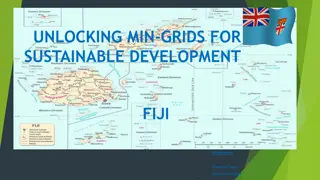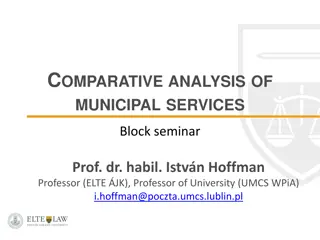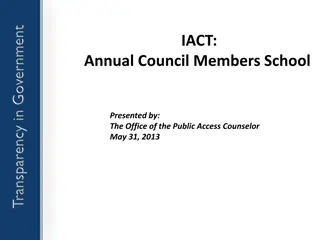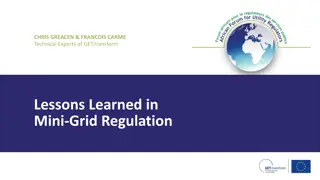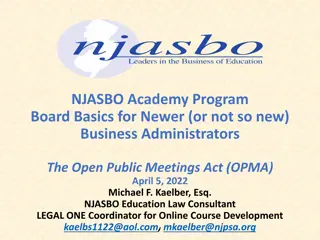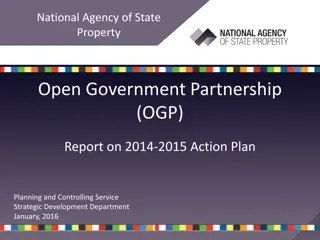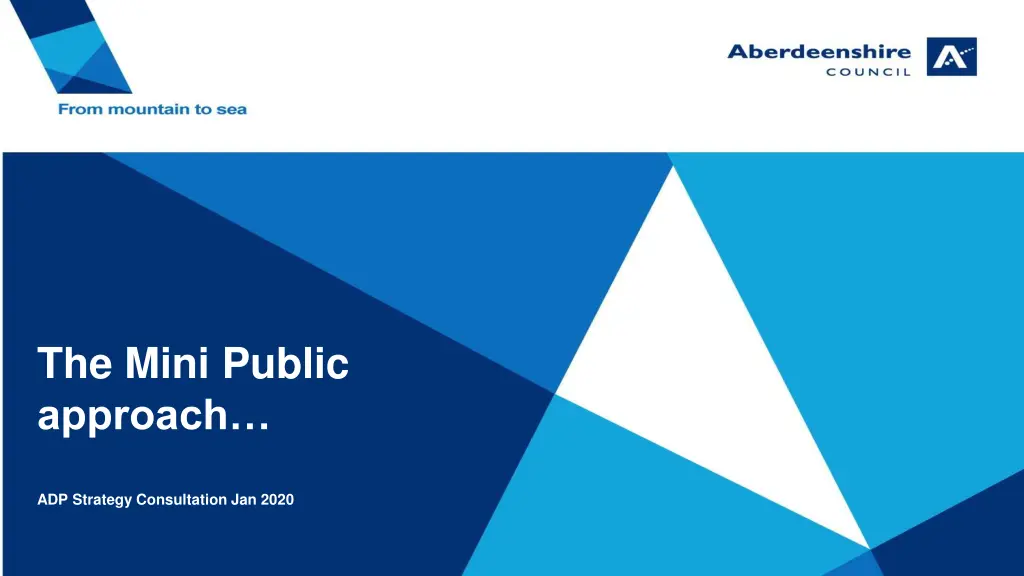
Understanding the Mini Public Approach in Community Engagement
The Mini Public approach involves engaging individuals representing community diversity in discussions on local issues, facilitating shared understanding and recommendations. Mini-publics are not statistically representative but aim for demographic diversity, fostering legitimate discussions. Key features include random participant selection, lowered participation barriers, facilitation of dialogues, learning from contributors, deliberation, and reasoned decision-making.
Download Presentation

Please find below an Image/Link to download the presentation.
The content on the website is provided AS IS for your information and personal use only. It may not be sold, licensed, or shared on other websites without obtaining consent from the author. If you encounter any issues during the download, it is possible that the publisher has removed the file from their server.
You are allowed to download the files provided on this website for personal or commercial use, subject to the condition that they are used lawfully. All files are the property of their respective owners.
The content on the website is provided AS IS for your information and personal use only. It may not be sold, licensed, or shared on other websites without obtaining consent from the author.
E N D
Presentation Transcript
The Mini Public approach ADP Strategy Consultation Jan 2020
What is a mini public A process to involve individuals who reflect the diversity of the local community in a group discussion about an important local issue . with enough time built in to the process to make sure everyone understood the issue being discussed. People got the chance to interview key stakeholders and to explore the issue -developing a shared understanding of how the issue could be addressed to meet the needs of the community. The result the group agreed on what they think should happen and made a recommendation of their findings...
Smaller Mini-Publics Smaller mini-publics are not intended to be statistically representative of the population, but are still demographically diverse . A range of demographic characteristics from the broader population are adequately represented. Underpins the argument about the mini-public s legitimacy Final Report of the Commission on Fair Access to Political Influence: Annex Document, Jimmy Reid Foundation, October 2013
ADP Mini Public ADP Mini Public Icebreakers, ground rules and group dynamics. Icebreakers, ground rules and group dynamics. Key inputs on Human Rights approach, and Radical Key inputs on Human Rights approach, and Radical Kindness Kindness small group discussions, large group Q&A small group discussions, large group Q&A Dialogue Introducing the strategy Introducing the strategy Divergent phase Convergent phase Deliberation Recap on day one and keynote input on the strategy. Recap on day one and keynote input on the strategy. Two small group processes to deliberate on key Two small group processes to deliberate on key questions questions. . Prioritisation Prioritisation - - agree on final recommendations agree on final recommendations
Mini Mini- -publics: Key features publics: Key features (Escobar and Faulkner) (Escobar and Faulkner) Selection: participants selected randomly or quasi-randomly Lowering barriers to participation: e.g. stipend, childcare, transport Facilitation: fostering dialogic + deliberative patterns Learning phase: participants call in contributors/ witnesses to present testimonies and evidence: activists, stakeholders, experts, politicians, civil society, business Deliberative phase: participants deliberate in light of evidence and testimonies > re-examining own preferences/views/positions Decision-making phase: reasoned conclusions or recommendations made after considered judgement
Evaluation 90% felt better informed after day 1 95% on day two 100% felt they and others had been able to contribute to the discussions. 95% endorsed the final findings one person partly endorsed them. Feedback to ADP broad support for a strategy underpinned by radical kindness and the human rights approach.


